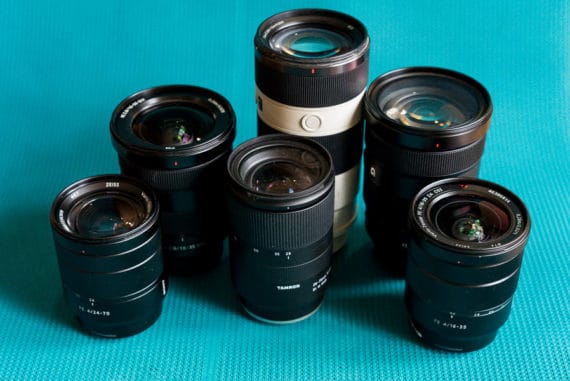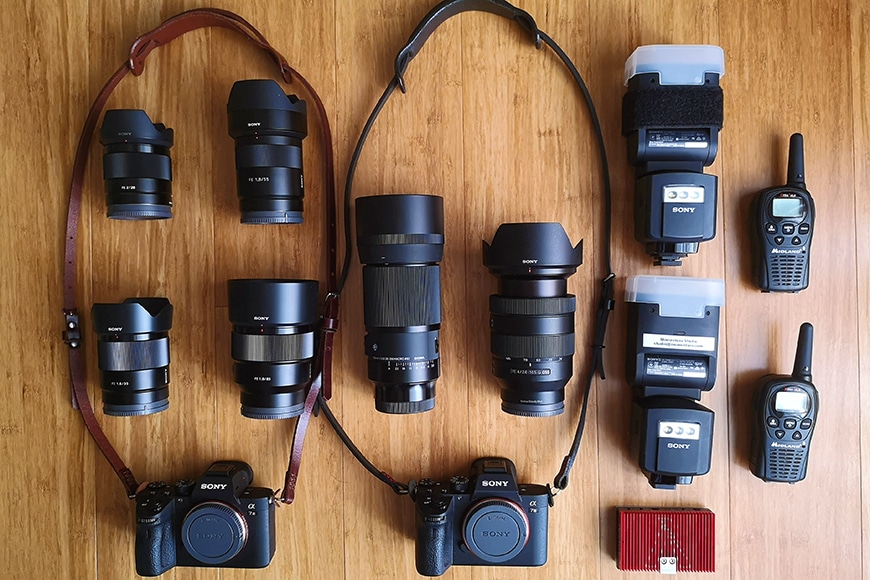
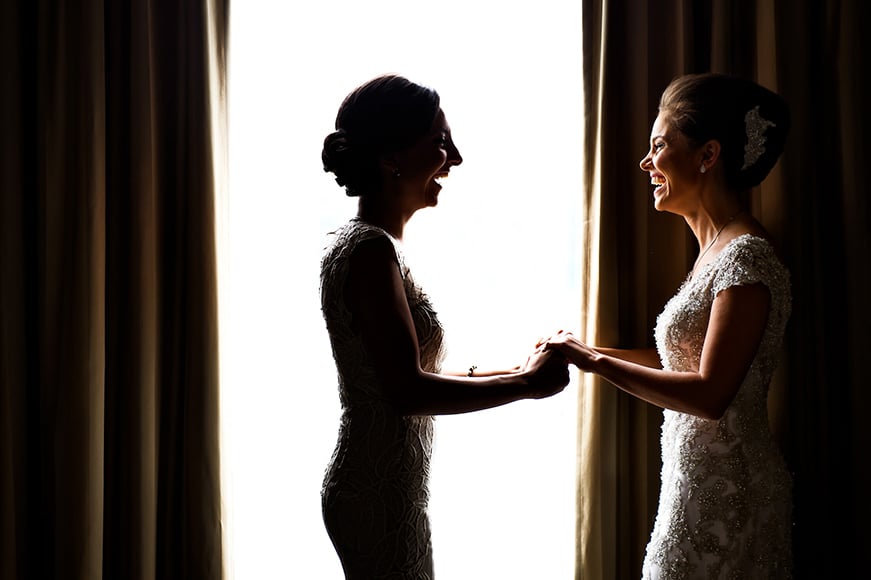


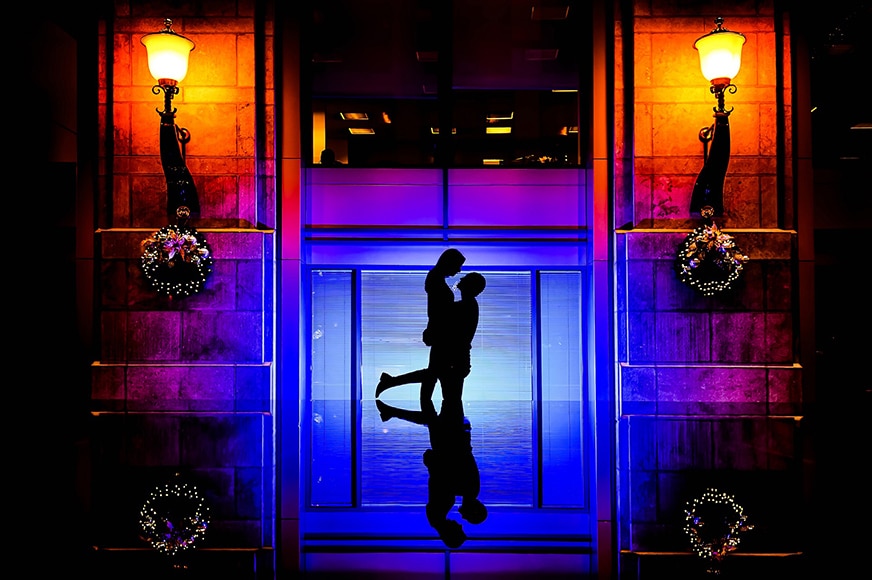
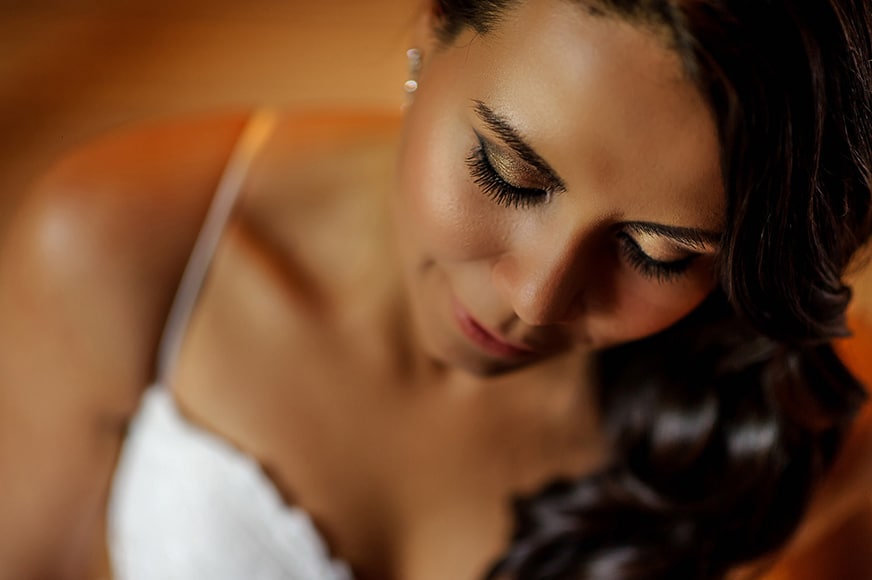

Brian Di Croce
Wedding | Last Updated: September 29, 2021
Howdy! My name is Brian Di Croce and I’m the founder of Momentura Studio, a modern wedding photography boutique based in Montreal, Canada. Since 2012 I have mostly focused on documenting weddings from coast to coast in Canada.
My style of photography is based on the documentary approach with a creative twist, all the while considering key photographic elements such as composition, emotion, and lighting.
When not photographing weddings, I’m putting my software engineering degree to good use by writing software for profit. I tend to get bored fast, so doing things that allow me to play with my creativity helps in creating unique images for my clients.
I previously used to shoot primarily with Nikon full-frame cameras (D700, D3s) however, although the gear was excellent for photographing weddings, it was also quite heavy. Any heavy equipment that you carry on your person for a long period of time can cause pain in your body, which in turn might hinder your creativity.
In 2018, I switched to Sony cameras and lenses, and everything changed for good. The Sony mirrorless system is light, quick to focus, tracks the subject’s eyes perfectly, and is super quiet to shoot. All these advantages allow me to photograph full-day weddings without any unwanted pain in the neck and shoulders.
Cameras
Sony A7 Mark III – I carry two bodies because firstly I need a quick backup in case either malfunctions, and secondly I can quickly use two different focal lengths (35mm and 85mm).
I love how these small cameras weigh so little. I opted for the Sony cameras over the mirrorless Fuji ones because of the larger capacity of the batteries. I carry six batteries at all times to make sure I never miss a moment throughout the whole day.
I shoot in manual mode and with the crazy ISO capabilities of the camera, I mostly have to play around with the shutter speed to quickly get a proper exposure. Finally, the silent shooting mode allows me to capture solemn moments during the quiet parts of the day, especially during the ceremony.
Lenses
Sony 28mm f/2 – This little guy helps me to get pretty much anywhere on the dance floor. It’s tiny, it’s light and it’s fast. I like this focal length when I want to capture the moment within its environment.
If a 24mm is mostly used for photographing landscapes and a 35mm to capture moments in a documentary fashion, I believe the 28mm fits just in the middle by offering the best of both worlds – capturing moments while showcasing the environment where they have occurred.
Sony 35mm f/1.8 – I tend to joke around by saying I use the 35mm 85% of the time, and the 85mm 35% of the time when photographing weddings. But it’s kind of true in some way.
The 35mm is my personal favorite focal length to tell stories visually. I call it a documentary lens. This one is light, focuses super quick and is also silent. Whenever I want to tell a story with an image, this is the lens I pick.
Sony Zeiss 55mm f/1.8 – When I’m creating a portrait, I will generally use this one. Not being considered a wide-angle, I know that my subject won’t be distorted when being photographed.
Its low light capability also makes it a good candidate during the ceremony and reception when I feel like I’ve saturated the use of the 35mm and 85mm.
Sony 85mm f/1.8 – This is my favorite telephoto lens in my kit. I use it not only for portraits but also for documenting moments when I’m too far from the action. If I need that extra reach, I quickly switch the APS-C mode on the Sony, which would give me a field of view closer to 125mm.
I might lose some resolution on the image by doing that, but at 12 megapixels it’s still very usable, as my Nikon D3’s maxed out at 12 MP anyways.
Sony 24-105mm f/4 – This lens is not only my backup for pretty much all the other lenses, but the one I use the most when photographing an outdoor ceremony. With the high ISO capabilities of the Sony A7iii, one could also use this lens for everything, however, a faster lens is a must when photographing low light situations while preserving a fine quality in the image.
Sigma Art 135mm f/2.8 Macro – This is the newest addition to the family. It’s also my first Sigma lens. The build quality is pretty good on this one and not too heavy. I opted for the Sigma macro lens over the Sony 90mm macro because from what I could see on the reviews, the Sony one wasn’t as sharp as the Sigma.
This lens can be used anytime that I want a 1:1 reproduction of something – rings, engravings, portraits, etc. It doesn’t focus as quickly as my other lenses, but it produces something that the others can’t by being a macro lens.
Lights/Triggers
Sony HVL-F60RM (2x) – I use two of these flashes. They’re quite bulky, but not heavy. They produce a solid punch of power when needed and they don’t overheat as much as other models of flashes.
I don’t have to worry about not being able to properly light a dark reception room nowadays. Black paint on the ceiling? No problem. High ceilings made of dark wood? Bring it on!
It handles everything I need from a flash in a stellar fashion. The RM series of Sony flashes also have a built-in radio controller that can be used as a transmitter and receiver up to 30 meters. If I need a longer range of transmission, I’ll use a pair of PowerWizard Plus III transceivers. As a bonus, this flash model also has a built-in video light, which is perfect to add just a bit of light when I need to.
Aputure AL-MX – This is my favorite video light available on the market right now. It’s tiny (fits in my pocket), powerful, and comes with great features. For example, I can change the color temperature of the light and its brightness independently. It also has a booster mode which will increase the brightness of the light for a short period of time when needed.
It charges over a USB-C connection, so you can bring a USB battery charger should you need to charge it during the day, but with the battery of the Aputure AL-MX already being more than enough, charging it might not be necessary until the next wedding.
Bags/Straps
Think Tank Airport Advantage – My current bag is a Think Tank Airport Advantage roller case. It carries all my equipment and protects it from the elements. I have been a Think Tank customer for the past decade because of the quality of its products, but also because of their excellent customer service. If you need extra dividers or a new pair of wheels, they’re always willing to help and deliver.
Fab Straps – I use two straps of the same model, but different colors – one brown and one black. They’re made by Fab, which if I’m not mistaken, are handmade in Montreal. They’re slick, comfortable and the leather just feels good on my neck and shoulders. I prefer straps over a harness because of the flexibility I have to extend the camera as high as my arms can go.
Hardware & Software
Macbook Pro 13″ – I’m still using this laptop to edit all my photos. It’s fast, the Retina screen provides me with all the visual details to make proper decisions when working on an image, and it’s small enough that I can carry it in the front pouch of the camera bag.
Photo Mechanic v6 – I’ve been using this software for the past ten years because it’s the quickest way I found to cull thousands of photos from a wedding in less than an hour or two. Previously, I have tried using Lightroom to cull the images, but it wasn’t as efficient as Photo Mechanic.
Adobe Lightroom Classic – What else can I say about Lightroom that you might not already know? I think it’s the de facto standard in the industry for workflow management and post-processing images.
Adobe Photoshop – When I need to curate an image a bit more, this is the tool I use with a few of my favorite custom filters. Images that go to my portfolio, slideshow, or blog are curated with Photoshop.
Midland LXT-500P walkie-talkies – I have had this pair for almost ten years now and they’re just as good now as when I purchased them brand new. They are a fantastic way to communicate with my couple when we’re separated by a good distance.
I’m not one to shout, so these come in handy when I want to give clear direction to the subjects without being too loud about it. I keep one on my person and hand the client the other. The range is excellent too.
Final Words
Photography is the medium that we have to document lives, not only for ourselves but for others. Even if those ‘others’ aren’t here yet. To be able to document weddings is an honor that shouldn’t be taken lightly.
As wedding photographers, we’re visual authors that get to narrate the story of how two people come together and are joined as one, with the joy and approval of their families and friends.
Throughout history, photography has been used to stop wars, I believe that wedding photography can be used to show the true meaning of love that can help a future generation in understanding what it means to love, forgive and grow as a couple, as a family.
I’m glad for the technology that we now have that allows us to do this well, sometimes effortlessly, and push the creative envelope to create images that will last a lifetime.
www.momentura.com | @momenturastudio

Check out these 8 essential tools to help you succeed as a professional photographer.
Includes limited-time discounts.










